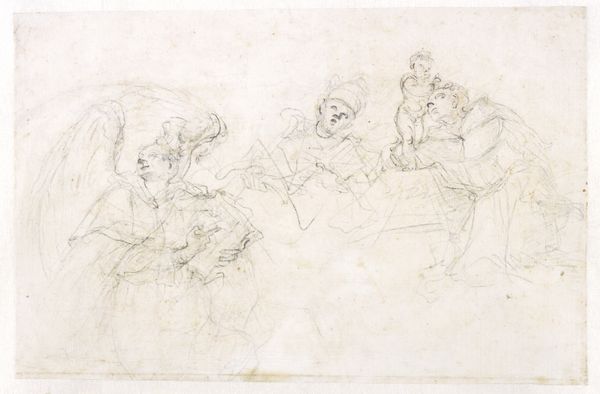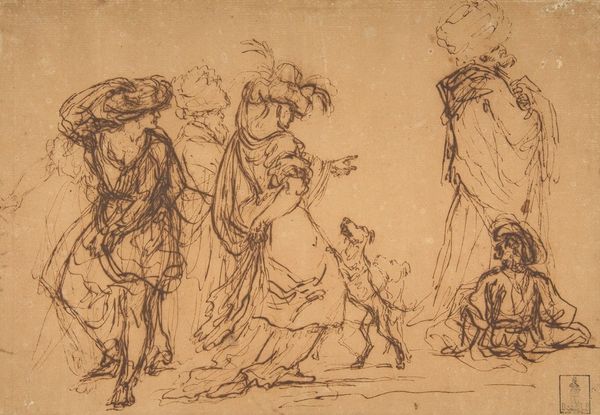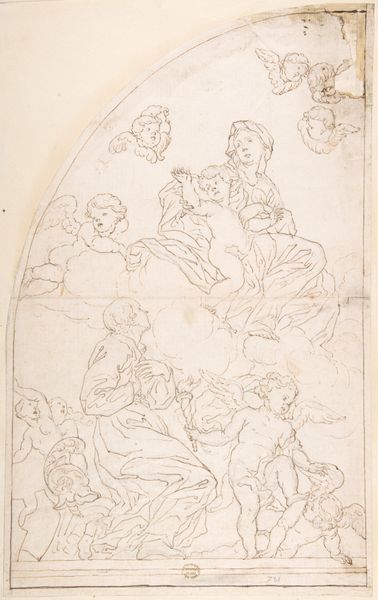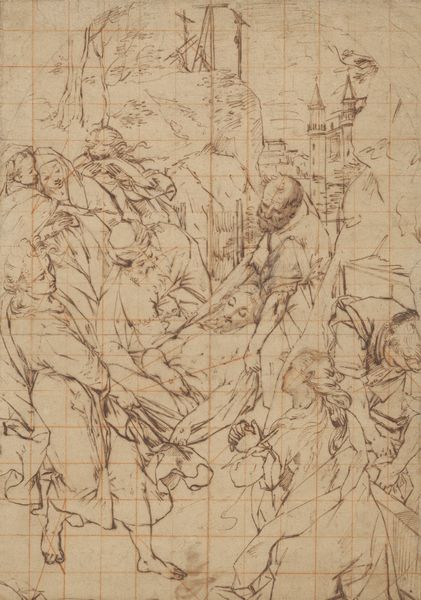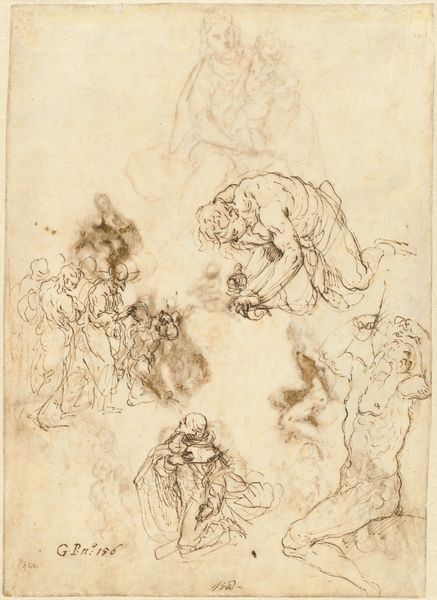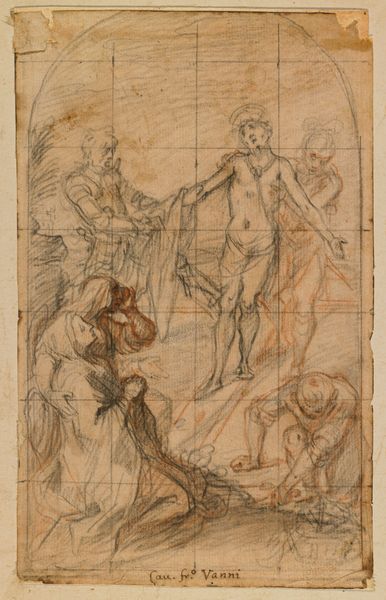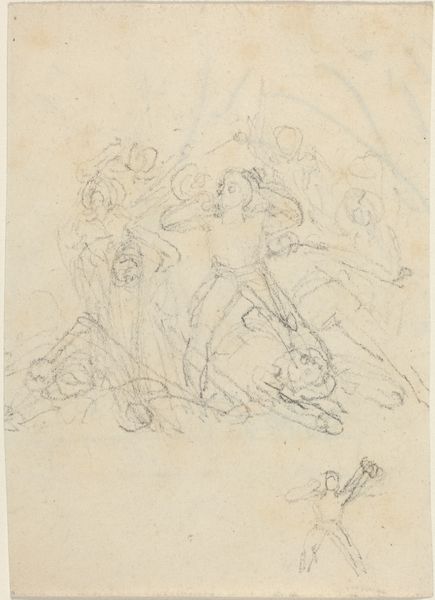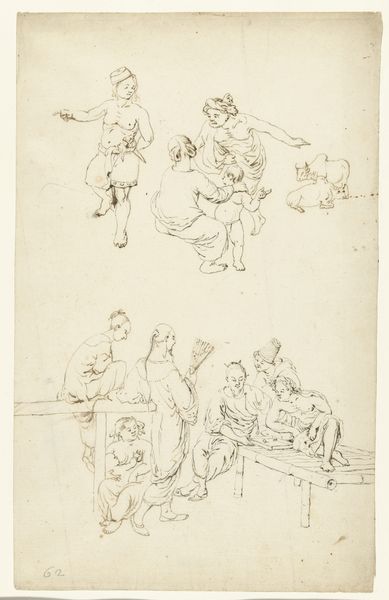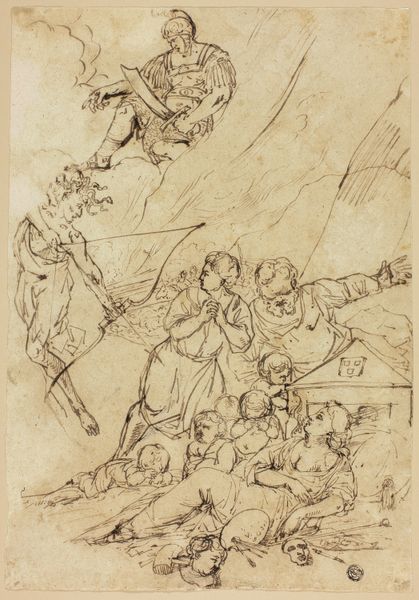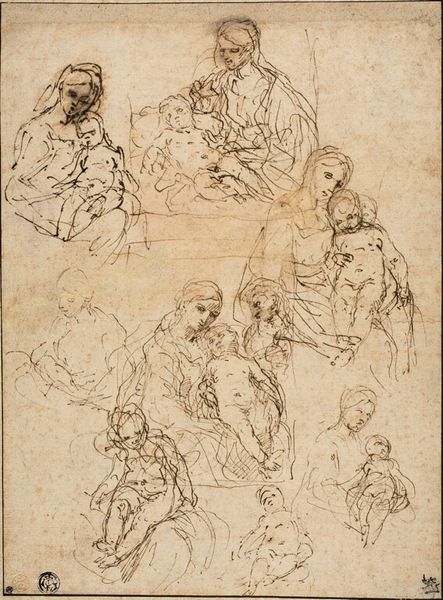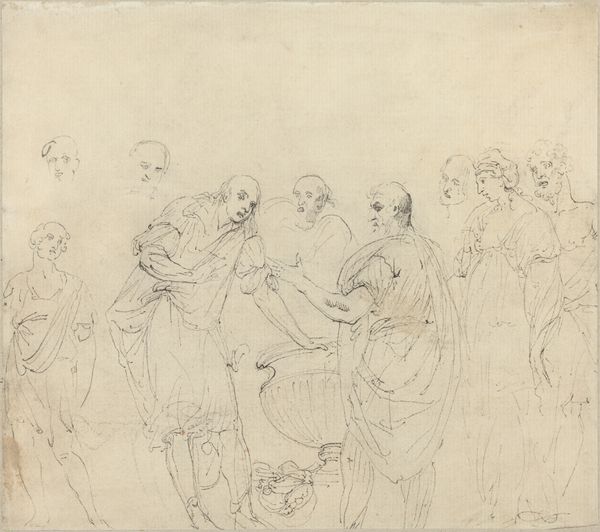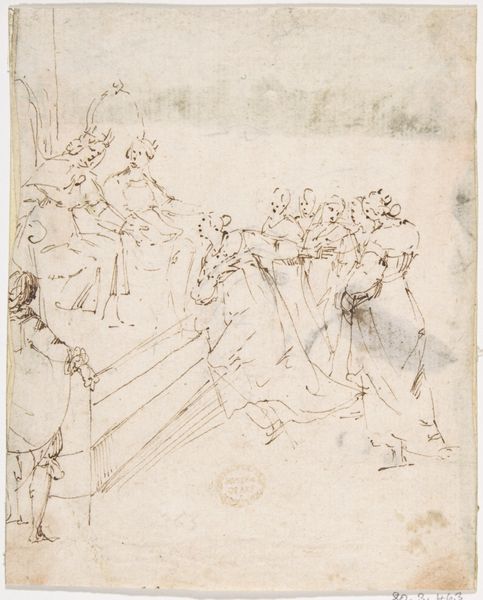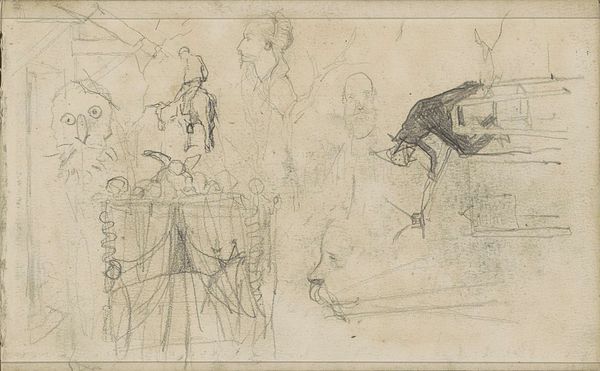
drawing, ink
#
portrait
#
drawing
#
mannerism
#
figuration
#
ink
Dimensions: 344 mm (height) x 216 mm (width) (bladmaal)
Editor: Here we have Federico Zuccaro's "Group of Spectators," dating roughly between 1540 and 1609. It's an ink drawing that has a certain unfinished quality. What strikes me is the distinct sense of separation, even amidst a crowd. How do you interpret this work? Curator: That sense of separation is key. Zuccaro, working within the Mannerist style, was deeply engaged with questions of power and social hierarchy. Notice how the figures are arranged: elevated, kneeling, looking upwards. Consider the implications of their gazes. Who are they looking at? Who are they meant to represent? This drawing, rendered in ink, subtly yet powerfully alludes to the theater of court life and its complex web of spectatorship. The gridded background too adds an element of surveillance and control, a controlled construction of visual power. Editor: So you're saying the act of observing in itself becomes a statement? I’m particularly drawn to the figures at the front; there's a strong emotional quality. Curator: Precisely. What emotions do you perceive, and who do you think they represent? Consider their gestures, the lines that form their bodies – are they unified or fractured? Mannerism, as a style, embraced ambiguity and distortion to reflect the social and political unease of the period. Zuccaro’s spectators may represent the various roles people played, willingly or unwillingly, within that societal structure. Editor: The theatrical element is becoming clearer. Is this a preparatory drawing for a larger composition, perhaps within a fresco or other finished work? Curator: It’s plausible, given the planning grid and the grouping of figures. Even if it’s a study, the drawing's function as a means of exploring social dynamics remains significant. It unveils how power operates not just through grand narratives but through these quieter moments of observation. Editor: That’s a fascinating viewpoint. I initially saw only individuals but now recognize the representation of an entire system, a societal gaze turned in on itself. Curator: Indeed. It urges us to look beyond the immediate image and critically examine the unseen structures that shape our perception and engagement with the world around us, and art’s enduring power to question the same.
Comments
No comments
Be the first to comment and join the conversation on the ultimate creative platform.
